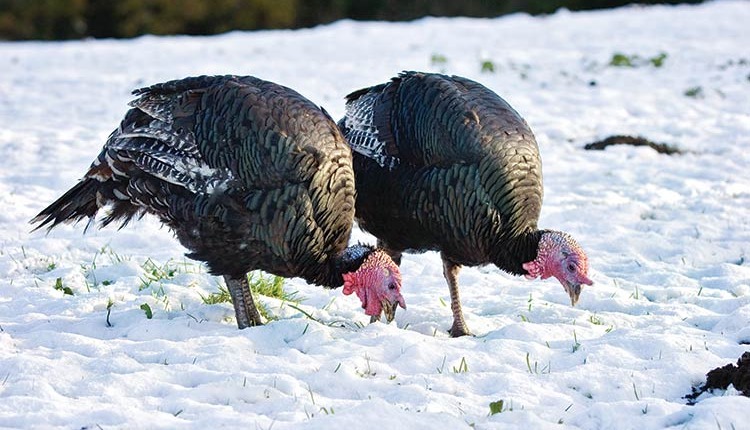
Turkeys and dairy farms or feedyards shouldn’t be mentioned in the same sentence. However, some farmers feed turkeys and birds in addition to feeding their dairy cows or feedlot cattle. This happens when corn in the diet passes through in manure because it is not sufficiently digested by the cows or cattle.
In such situations, fecal starch concentrations as a percent of dry matter (DM) rise, making this measure a fantastic tool to identify performance opportunities on your farm.
Dairy scientists have been teaching us to use fecal starch as a tool for years; however, it’s still an underutilized measure on the farm. Randy Shaver at the University of Wisconsin published a research paper in 2014 showing that fecal starch content is tightly related to how well grain and starch is used in the diet. The greater the starch content in manure, the less that was digested. Fred Owens and his colleagues at the University of California published a similar article for beef cattle.
Both groups’ observations are logical. Yet, the money-making tip that can come from their collective work is hidden in translating manure starch into bushels of corn going unused by cattle. Here, the bushels are being applied back out to fields when manure is used as fertilizer, feeding turkeys and birds, and adding little to your farm’s bottom line.
Wasted bushels
A feed laboratory fecal starch report will show you a couple outputs: 1) fecal starch (percent of DM) and 2) predicted total-tract starch digestibility (TTSD) for beef or dairy based on the research papers cited above. There is extreme variation in fecal starch percent found in samples submitted to Rock River Labs (Watertown, Wis.). While the target is to be below 2 percent, many samples are measuring far above this value.
Use the predicted TTSD value to calculate how many bushels of corn are being wasted per cow per day. For example, with 5 percent fecal starch (dairy) and 93.8 percent TTSD, we can work through the following math.
Assume corn is 72 percent starch and we’re feeding a 25 percent starch diet with 55 pounds of dry matter intake per day. This equates to feeding 19.1 pounds (55 multiplied by 0.25 divided by 0.72) of corn grain equivalent per cow, or 0.34 bushels. Multiplying 0.34 bushels by 0.938 (93.8 percent TTSD) equals 0.32 bushels digested, or 0.02 bushels wasted per cow. That equates to 2 bushels of corn wasted each day for every 100 cows.
Two bushels per day may not seem like much, however, this is over 100 pounds of corn fed to turkeys every day! The economic value of the corn alone is close to $7 per day, or 7 cents per cow. Multiply this value over the course of a month or year and the dollars quickly add up.
Improve starch digestion
Rumen and total tract starch digestion are functions of seed genetics and growing environment, ensiling, and grinding. Softer textured seed genetics, longer and more extensively fermented corn silage, and finer ground corn all equate to better starch digestion and less turkey feed. Fecal starch not only translates into feed waste, but also into lost milk or meat production. In the earlier example with 93.8 percent TTSD, there are likely several pounds of milk opportunity available if starch digestion could be improved to 98 percent or better.
Consider feed management changes around starch and grain use. Work with your feed mill, or if grinding on farm, strive for less than 500-micron mean particle size for dairy quality corn. With corn silage, avoid whole-plant dry matter eclipsing 37 percent and pay attention to kernel maturity during harvest. Check kernel processing at harvest and achieve a kernel processing score greater than 65 (in fresh chopped corn) for optimal starch digestion.
Use a research-backed bacterial inoculant in both corn silage and high-moisture corn for rapid and full fermentation. Also ensile high-moisture corn at greater than 26 percent moisture to help your corn turn more digestible.
Bring your nutritionist into the discussion and calculate the profit opportunity for your herd. There may be plenty of corn available on your farm, where wasting a bit may not seem to have an impact. However, think of waste in terms of bushels and let your dairy or feedlot cattle capture the value of these bushels instead of the turkeys.
This article appeared in the February 2018 issue of Hay & Forage Grower on page 10.
Not a subscriber? Click to get the print magazine

